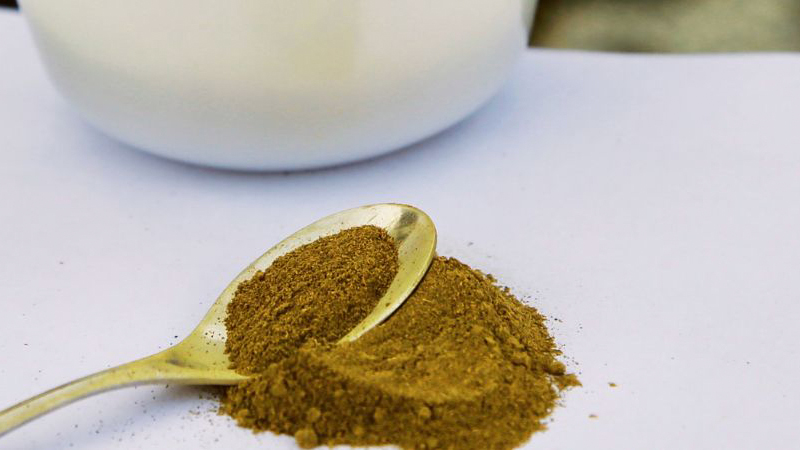What Are the Side Effects of Kratom?

Kratom is a powerful herbal supplement that has helped millions of people around the world, but this doesn’t mean it can’t cause side effects. Understanding how and why these side effects occur will help you reduce or even eliminate them.
This article explains every side effect you could experience when using kratom so you can get the most out of this herb.
Short-Term Side Effects of Kratom
Because of its unique chemical composition, kratom can provide an incredible variety of effects, both positive and negative. Most users experience undesired reactions at some point when taking kratom.
Adverse side effects often indicate misuse, although some people experience them after a single dose. Taking too much in a single dose or using kratom for months without breaks will almost always cause adverse reactions.
You should always pay close attention to your body after taking kratom, especially when trying a new strain or brand.
Nausea
Nausea is one of the most common side effects of kratom, and it can happen for various reasons. If you consume a high dose, nausea is the first sign you’ve taken more than your body can handle.
Feeling sick is especially common among new users since their body is not used to digesting the tough fibers in kratom leaves. Sometimes, even the taste alone can cause people to throw up.
However, you do not need to feel sick every time you use kratom. There are various ways to avoid this side effect.
The most important way is not to consume kratom on an empty stomach. Some users recommend doing this for a faster effect, but it will almost surely cause you to feel sick. You should take your dose 15 to 20 minutes after a meal.
If your preferred method of taking kratom is to prepare a tea, adding some ginger to the brew can also help with nausea.
If you experience nausea, the best way to reduce it is by taking an antiacid.
Dizziness
Dizziness is a side effect of high doses and is especially prevalent among sedative strains. Kratom-induced vertigo can be very intense, forming part of a set of symptoms known as “the wobbles.”
This results from low blood pressure and how kratom interacts with the opioid receptors in your brain. Overstimulating them can cause an imbalance in your inner ear, which creates the feeling of dizziness and contributes to nausea.
Red-veined strains are more likely to make you dizzy, but some green-veined varieties can also cause this side effect.
If you ever experience dizziness after taking kratom, the only thing left to do is wait it out. Lying down in a dark room can help you manage it better. Motion sickness medicine can work, but it could also potentiate the effects of kratom.
The best way to avoid vertigo and dizziness is to decrease your dosage. In most cases, a slight reduction will succeed in eliminating the wobbles. If you continue to get dizzy after reducing your doses, you should try switching to a different strain.
Anxiety

Managing stress and anxiety is one of kratom’s main features, but in some cases, it can exacerbate these feelings.
Kratom can produce anxiety for various reasons. Sometimes it is the result of continuous and excessive use, causing a build-up of alkaloids in your body. These alkaloids can also affect your adrenaline system and trigger a fight-or-flight response.
Some people also use kratom’s anxiolytic effect to avoid their feelings, but this will cause more trouble in the long run.
Anxiety is also a sign of addiction. If you use high doses of kratom for a long enough period, your body will develop a physical dependence on it, which will cause withdrawal symptoms when it wears off.
If kratom is causing you to feel anxious, you should drastically reduce your dose or consider taking a break from it. During this time, you can try other natural supplements and healthy practices such as meditation.
Other Common Short-Term Side Effects
There are several other side effects associated with kratom, but they are not as common as the ones listed above.
- You may feel lethargy and extreme fatigue sometimes. If you get too accustomed to the extra energy, you will eventually find yourself constantly tired and needing high dosages to accomplish daily tasks.
- After wearing off, kratom can cause brain fog and affect your cognitive functions. This can negatively impact your social and professional life, as it creates difficulties in maintaining conversations and staying focused on a task.
- Allergic reactions are not common, but they are possible. Kratom can affect your skin, throat, and stomach.
- Kratom can slow down your digestive system and cause constipation. Drinking water and increasing your fiber intake can counteract this effect.
- Hallucinations and psychosis are infrequent side effects, usually happening in people with preexisting psychotic disorders.
Long-Term Side Effects of Kratom
Despite being known and used for centuries, not many studies explore kratom’s long-term side effects. Still, abusing anything for long periods will cause problems, and kratom is not the exception.
Although most of these long-term effects are not yet fully understood, the following are linked to excessive use of kratom.
1. Hormonal & Emotional Imbalance
If you use kratom regularly, the constant fluctuation of alkaloids in your body can cause sudden mood swings. Moreover, this herb can also alter the hormone production in your body, especially affecting testosterone production.
There are several theories on how kratom causes low testosterone, but most studies are inconclusive. However, several other side effects could be related to low levels of testosterone.
A hormonal and emotional disbalance can negatively impact your romantic relationships, causing you to feel numb to all emotions, including positive ones.
2. Kidney & Liver Damage
In some cases, using kratom has caused liver and kidney issues. Symptoms usually appear within eight weeks of regular kratom consumption.
Kratom has a very high alkaloid content, with around 12 different ones that need to be processed by your liver. Some people have a difficult time breaking down each alkaloid, resulting in liver toxicity.
Although kratom does not directly affect kidneys, if the liver cannot metabolize every compound, that job will fall on these organs and cause damage.
If you have a healthy liver, you most likely won’t have any trouble while taking kratom. You are only at serious risk of liver and kidney damage if you have preexisting conditions or are taking medications that are hard on the liver.
3. Low Libido
Traditionally, natives used kratom as an aphrodisiac and sexual enhancer, but the long-term use of this herb can lead to low libido.
Arousal is a complex process, as it involves both physical and emotional factors. This is why determining the cause of low libido can be complicated.
As discussed above, kratom can impact your hormonal and emotional health, as well as your energy levels. This combination of side effects can affect your sex drive and lead to libido loss.
Another possible cause of low libido is more physical, and it involves prolactin, a hormone known to affect sexual function. Taking kratom can increase prolactin levels, which can lead to impotence.
Is Kratom Bad for You?

Kratom is perfectly safe when used responsibly. It is a herbal supplement, and it is almost impossible to overdose on it.
There is a campaign against kratom where several authorities and alarmist news outlets claim it to be a dangerous substance. In some cases, even deaths have been blamed on this plant. However, almost every case used against kratom involves a combination of multiple drugs.
Some respected institutions [1] have studied kratom and determined it safe — albeit needing further studies. Moreover, millions of people immensely benefit from kratom, including cases of chronic pain or those that use kratom to overcome opioid addiction and lessen opiate withdrawal symptoms.
Can You Become Addicted to Kratom?
Any substance that offers relief from physical or emotional pain can become addictive, and kratom is not an exception. The constant abuse of kratom can cause you to become dependent on it.
Kratom addiction starts with psychological dependence. As soon as the effects wear off, you crave another dose. Even if you do not need it, you may feel unhappy or anxious without it.
Eventually, the continued use causes your body to adjust to the presence of alkaloids, and you will feel physically ill without them in your system. Treating this level of addiction is more complicated, as you’ll likely experience withdrawal symptoms.
Kratom Withdrawal
Kratom withdrawal involves several psychological and physical symptoms, which are the result of your body feeling unbalanced. It usually lasts for about a week, but it depends on each person.
The first signs of kratom withdrawal are insomnia and irritability. Then, you might experience stomach pains, diarrhea, and headaches.
Symptoms reach their peak around days 2 to 4. At this point, you can feel depressed, tired, and restless while suffering from body aches or a runny nose. This can also come accompanied by a strong need to take kratom.
Eventually, the symptoms start to subside, and you feel more energized with each passing day.
Although it is not a pleasurable experience, kratom withdrawal is significantly less severe when compared to the withdrawal symptoms of other substances. Opiate withdrawal, for example, can cause seizures, dehydration, and heart failure in extreme cases.
If you are going through a kratom withdrawal period, you can use over-the-counter medicines to alleviate some symptoms. Nonetheless, you should always seek professional advice before self-medicating.
Can You Overdose on Kratom?
It is technically possible to overdose on kratom, but you are not at risk for any severe consequences unless you combine it with something else. There are few reports of deaths where kratom was the only substance involved.
A kratom overdose results in vomiting, diarrhea, dizziness, and tiredness. Unless these symptoms become violent or you faint, there is no need to go to a hospital. You will feel better once your body eliminates all the excess kratom.
Kratom Drug Interactions

As you have seen above, it is very difficult for kratom to become dangerous by itself. Even in rare overdose cases, the symptoms subside given enough time.
However, you should always avoid combining kratom with other medications or substances. Otherwise, there is a risk of a dangerous or even fatal outcome.
Here is a list of some drugs that become dangerous when combined with kratom:
- Alcohol
- Opiates
- Oral Contraceptive Pills
- Blood thinners
- Blood pressure medications
- Stimulants
- Tricyclic antidepressants
- Peripheral adrenergic inhibitors
- ACE inhibitors
- MAO inhibitors
- Eugeroics
- Biguanides
- Alpha-Blockers
- HIV antivirals
- Barbiturates
- Benzodiazepines
In general, you should avoid kratom if you are taking any medicine that interacts with the CYP2D6 enzymes. If you are taking any other medications, you should consult with a doctor before taking kratom.
How to Safely Consume Kratom
To avoid uncomfortable side effects and keep yourself from developing an addiction to kratom, you can follow some simple rules and guidelines for safe consumption.
Using kratom responsibly will not only benefit you, but it will also help all other users who rely on the herb. Proving to authorities that kratom is not a threat will help keep the herb legal in your country.
1. Buy High-Quality Kratom
Finding a vendor who sells quality kratom online or near you is the most crucial step because no matter how responsible you are with your consumption, taking poor-quality kratom can harm you. Although it is not common, there have been some cases of adulterated kratom products.
For this reason, it is best to buy from reputable vendors or well-known brands that offer third-party lab test results. These tests show you the alkaloid concentration in each product and if it has any contaminants or heavy metals.
2. Measure the Right Dose
The amount of kratom you should take varies according to several factors, such as age, weight, tolerance, and desired results. Anything over 8 grams is considered a heavy dose and is best avoided.
You can make a simple calculation based on the effect you are looking for. If you want stimulating effects, you should take 0.025 grams for every pound you weigh. For a sedative dose, a higher amount of 0.04 grams per pound should be enough.
Additionally, you can use online dose calculators for more precise amounts. We highly recommend you measure your doses with a scale and not spoons, as volume is often inaccurate using the latter.
3. Take Regular Breaks
Taking breaks from kratom reduces the chance of you developing a dependence on it. Moreover, spacing out your doses improves your experience with kratom and gets you better results.
If you use kratom every day, you will build a tolerance to it and will need to take higher amounts for the same results. Creating a schedule for your doses is the best way to maintain a consistent level of alkaloids in your body.
For everyday users, it is best to wait 12 hours between doses. Otherwise, you can dose every 6 hours.
It is also a good idea to wait one or two days before retaking kratom. This way, you will avoid building any tolerance for it.
Conclusion: Kratom Side-Effects
Kratom is a safe and beneficial herb, and most cases of adverse reactions are a consequence of abuse. Abusing anything will lead to side effects, including ordinary things like coffee and sugar.
Misusing kratom can lead to many side effects, both physical and mental. The most common ones are stomach issues, fatigue, and dizziness.
Luckily, all of kratom’s side effects are easy to avoid by planning your doses and knowing how much you should take every time. The safe and responsible use of kratom will immensely benefit you and the kratom community.
Opinions on kratom vary greatly. Some people claim that kratom is a miracle herb, while others will tell you it is dangerous and harmful to your health. The truth is that both of these sentiments are wrong, and a balanced, respectful perspective is best for your health.